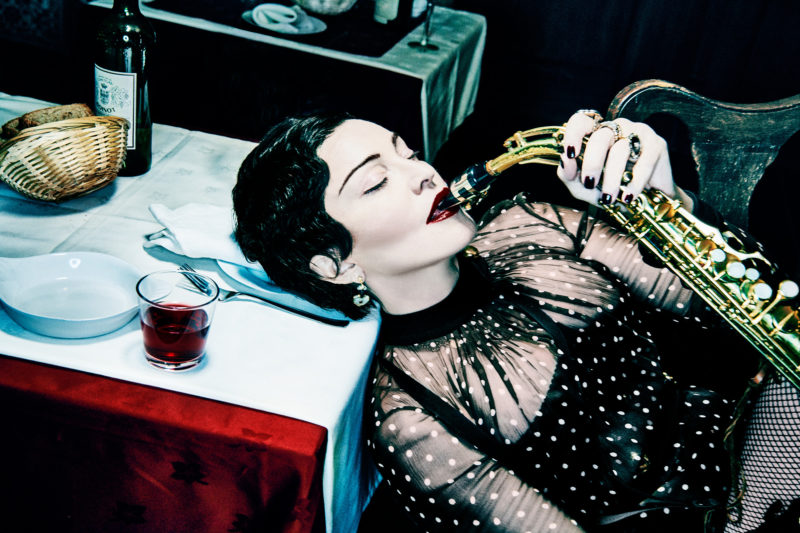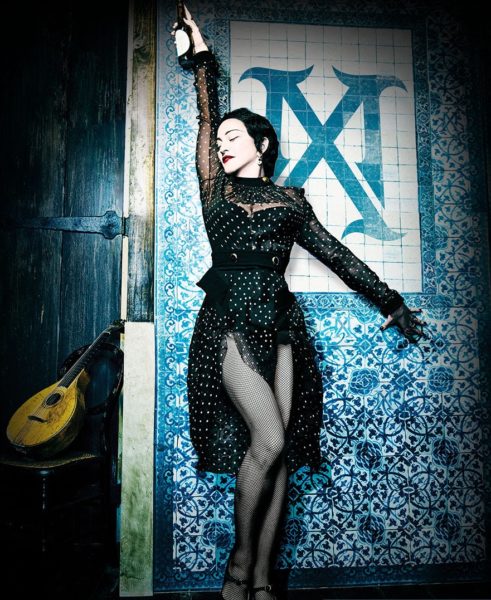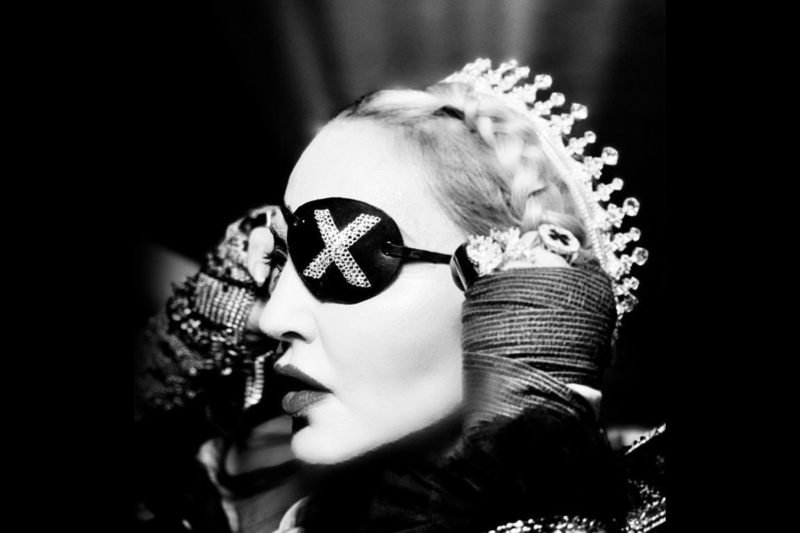Released on June 14th, Madonna’s latest musical effort – Madame X – hit the #1 spot in over 60 countries. A proof for the ongoing relevance of one of the world’s most successful female artist ever. Responses were mixed – some praising the album for its creative approach or political stand, many others denouncing it as confusing, with a lack of structure. Yet some records are not meant to be understandable immediately. With this one we have to ask ourselves: Who is Madame X?
It is for sure easy to get lost during the first meeting with her. The songs she presents to us vary in their musical style and rhythm. It is a foolish thing to run through such a record for a quick impression, giving it a rating based on its predecessors or expectations from Madonna as a musical instance. In a time of enhanced streaming, massive musical offers and fast skipping, she serves an album you need to dive in and crawl behind the final outcome to understand its massage. Even travel back to earlier stages of her career.

Copyright: Steven Klein
After some well curated, but less innovative records full of Timbaland-R’n’B (Hard Candy, 2008), Guetta-EDM (MDNA, 2012) or Diplo-Pop (Rebel Heart, 2015), 2019 seems to be Madonna’s return to her roots of reinvention and surprises: Not only is Madame X a roller coaster of genres, but Madonna transformed herself into a limitless character full of different directions.
Spreading first confusions just by wearing an eye patch to recent public appearances, people quickly shamed her for its strangeness. Probably the kind who does not find any strangeness in posting their latest meal or half-nude photo on Instagram – but that is another story.
First things first: Madame X is an alter ego, a figure coming out of Madonna’s various artistic inspirations throughout her career and before. According to the singer herself, one teacher in dance school used to call her Madame X due to her daily change of style and appearances in class – for being a human chameleon. A feature that later on should become Madonna’s trademark for her ongoing success. In 1992, she already created a second persona deeply inspired by German actress Dita Parlo. She took her first name to introduce herself as a sexual mistress behind the infamous Sex book and her most controversial record to date, Erotica.
At last an element of surprise

Copyright: Steven Klein
This year, we get to know the latest reincarnation of a bold female figure. A character too deep to be captured at first sight (or listening): “She is a spy“, Madonna explained in one interview when being asked about the mysterious (and irritating) patch covering parts of her face. “She says she’s been wounded. So she covers one eye.” Explaining the character in a short visual, the singer goes further: she is a mother, a child, a professor, a student, a nun, a prostitute. And much more. By now we saw Madame X being a cha cha instructor on the album’s lead single Medellín (with Latin pop sensation Maluma), a vulnerable lover on Crave (with US rapper Swae Lee), a spiritual rebel against transphobia in the impressive, religiously-bathed Dark Ballet (starring Mykki Blanco as Joan of Arc) or a fighter for freedom and equality in I Rise. A different persona on every track.
As singles of an established pop musician the tracks seem weak. They are no loud club bangers or simple airplay hits. For the last years Madonna has been measured solely by her milestones, as if there was a sharp cut between then (perhaps Ray of Light) and now (everything after). So media and audiences are often dissapointed. From this point it seems legit: Her last record to redefine any comprehension of pop music might be 2005’s Confessions on a Dancefloor – but let’s not forget we are speaking about an artist who is shaping her creative journey since the 80’s. There was no hiatus, no retirement. Just an ongoing process. Times have changed, so did pop music and Madonna as an artist.
Madame X is not an album to redefine, reshape or revolutionize anything. None of her latest records had such ambitions. This time, she was fortunately concentrated on putting out a personal, multifaceted piece of work.
Previously unreleased songs like God Control or Batuka show the singer’s awareness towards the recent Trump policy and global political conflicts. With Faz Gostoso, alongside Brazilian pop star Anitta, Madonna created one of her strongest collaborations to date. Mixing urban Brazilian funk music with contemporary elements. There is much more to come than we saw by now – hopefully with a lot more visuals. The first impression of Madonna’s new sounds may confuse, but in there lays her talent to finally surprsie her audience again. It takes a few moments to realize the concept of the album is to provide each part of it with a different tribe: from trap hop to latin music, from dancehall to disco and experimental pop. Everything combined and presented with a half-fictitious, half-real persona.
Madame X is unlimited, radical and fearless. An artistic figure who frames Madonna’s endless battle against the inequality of sexes, misogyny or ageism as well as her devoting role as a mother, lover and woman. A woman full of contradictions, willing to last against all the hate along her way. She is Madonna’s personal symbol for resistance and her latest move as a pioneer to prove that a female artist after the age of 35 can still be part of the pop business.
“Not everyone can come into the future. Not everyone that’s here is gonna last”, Madonna claims on the record’s song Future – a lyrical middle finger not only to all conservative thinking, but to those who want to see her leave the conversation. With Madame X she strengthened her seat at the table once more. Making sure if she stands up, than just to climb on top of it.



